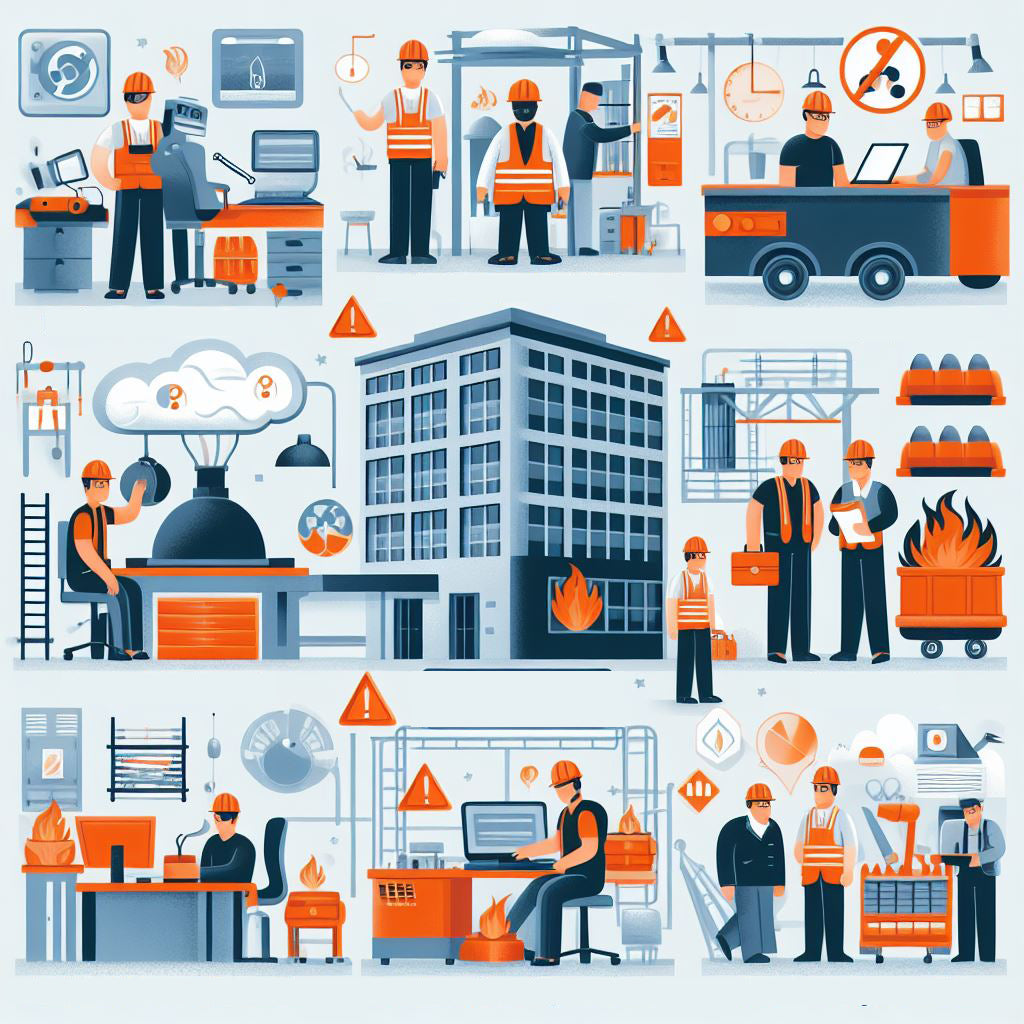
Identifying and Mitigating Common Workplace Hazards in India
Milan SafetyAs the Indian economy continues to grow and evolve, workplaces across the country face a range of hazards that can compromise the safety and well-being of employees. From manufacturing plants to office spaces, every workplace presents its unique set of risks. Identifying these hazards and implementing measures to mitigate them is crucial for ensuring a safe and healthy work environment for all.
Here, we delve into some of the most common workplace hazards in India and explore effective strategies to address them:
1. **Unsafe Working Conditions in Manufacturing Industries**:
India's manufacturing sector is vital to its economy, but it also poses significant risks to workers' safety. Hazards such as poorly maintained machinery, inadequate safety protocols, and lack of proper training can lead to accidents, injuries, and even fatalities. To combat these hazards, employers must prioritize regular equipment maintenance, provide comprehensive safety training to employees, and enforce strict adherence to safety protocols.
2. **Chemical Exposure in Laboratories and Factories**:
Many workplaces in India, including laboratories and manufacturing facilities, handle hazardous chemicals that pose serious health risks if not properly managed. Exposure to toxic substances can result in respiratory problems, skin ailments, and long-term health issues. Employers must ensure proper ventilation systems, provide personal protective equipment (PPE) such as gloves and masks, and implement strict protocols for handling and storing chemicals.
3. **Electrical Hazards**:
Electrical accidents are a common occurrence in Indian workplaces, often due to faulty wiring, overloaded circuits, or improper use of electrical equipment. These accidents can result in severe burns, electrocution, or even fires. Employers should conduct regular inspections of electrical systems, provide adequate training on electrical safety practices, and ensure that only qualified personnel handle electrical work.
4. **Work-Related Stress and Mental Health Issues**:
In today's fast-paced work environment, employees often face high levels of stress, which can lead to burnout, anxiety, and depression. Factors such as heavy workloads, tight deadlines, and poor work-life balance contribute to this issue. Employers should promote a supportive workplace culture, offer resources for stress management and mental health support, and encourage open communication between employees and management.
5. **Slips, Trips, and Falls**:
Slips, trips, and falls are among the leading causes of workplace injuries in India, especially in sectors such as construction, hospitality, and healthcare. Wet floors, cluttered walkways, and inadequate lighting increase the risk of these accidents. Employers should maintain clean and well-lit workspaces, install anti-slip flooring where necessary, and provide proper training on hazard awareness and safe movement within the workplace.
6. **Heat Stress in Outdoor Work Environments**:
Workers in outdoor settings, such as construction sites and agricultural fields, are susceptible to heat-related illnesses, particularly during the hot summer months in India. Employers should implement measures such as providing shade, frequent rest breaks, access to cool drinking water, and training on recognizing the symptoms of heat-related illnesses.
7. **Work-Related Musculoskeletal Disorders (MSDs)**:
Jobs that involve repetitive tasks, heavy lifting, or awkward postures can increase the risk of musculoskeletal disorders such as back pain, carpal tunnel syndrome, and tendonitis. Employers should design workstations ergonomically, provide ergonomic tools and equipment, and offer training on proper lifting techniques to prevent MSDs.
In conclusion, ensuring workplace safety in India requires a proactive approach from employers, employees, and regulatory authorities alike. By identifying common hazards and implementing effective safety measures, workplaces can significantly reduce the risk of accidents, injuries, and occupational illnesses. Ultimately, prioritizing safety not only protects workers but also enhances productivity and contributes to the overall success of businesses across the country.